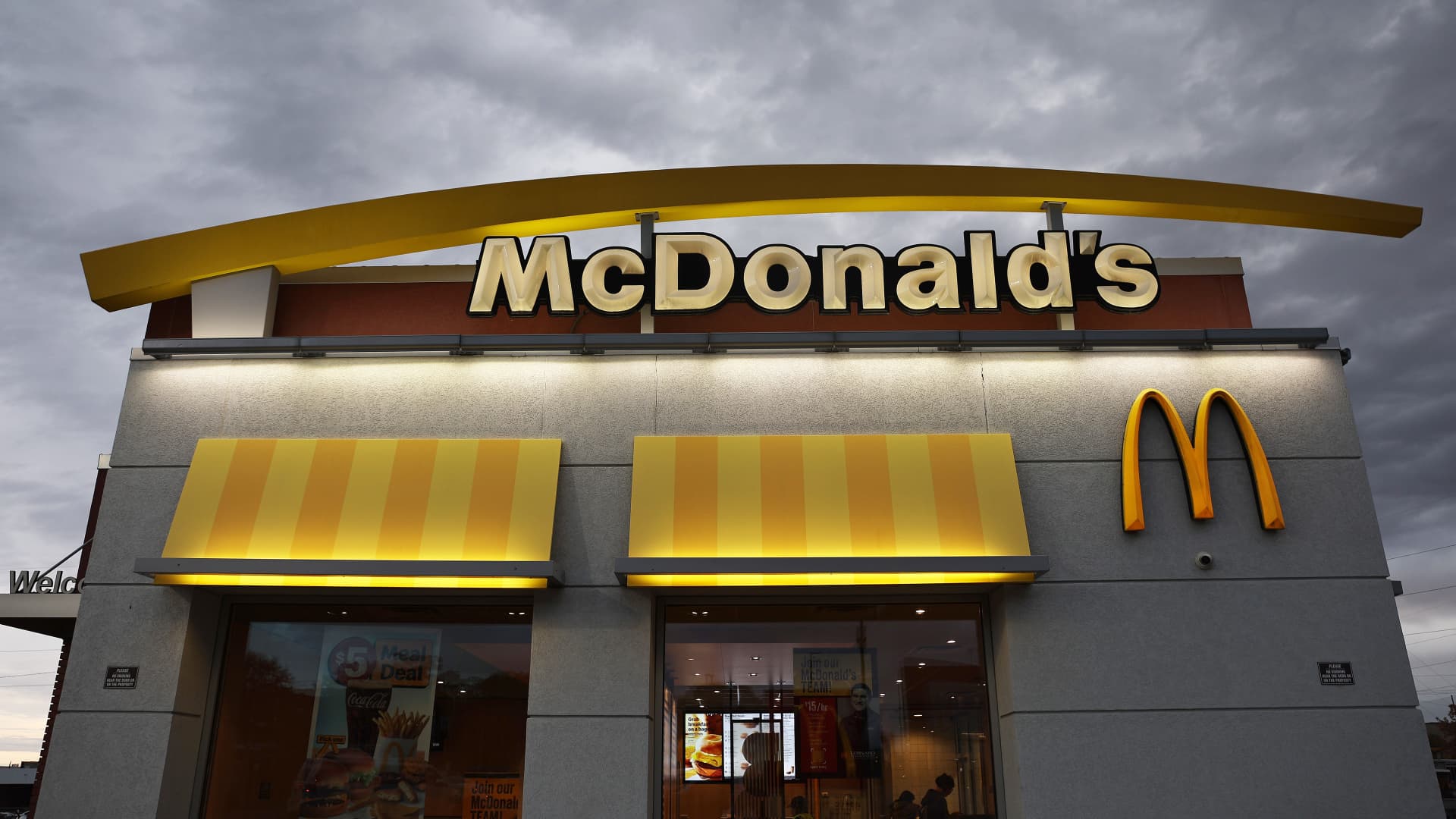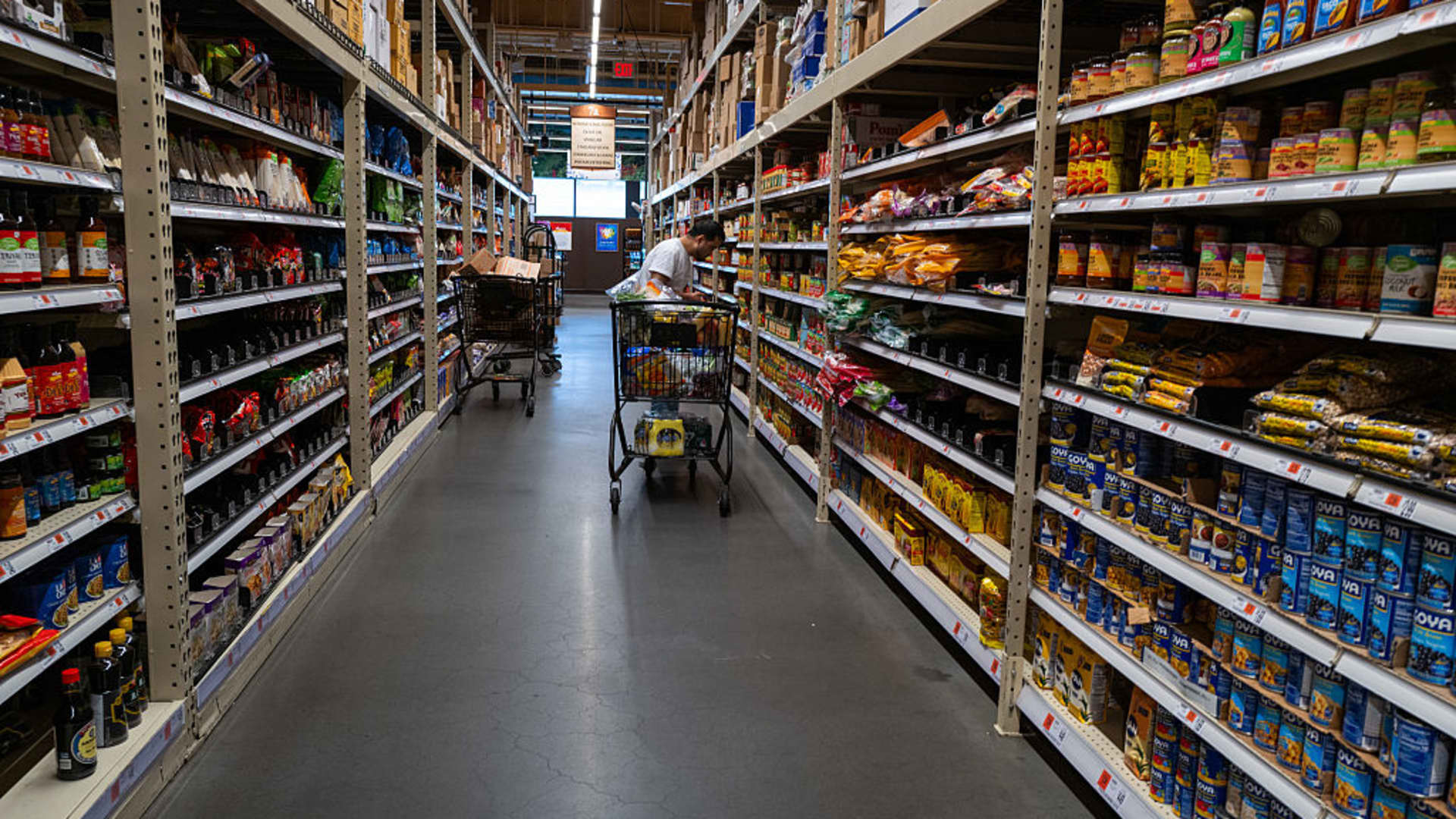A McDonald’s restaurant in Omaha, Nebraska, on Oct. 23, 2024.
Mario Tama | Getty Images
McDonald’s on Monday reported disappointing quarterly revenue, dragged down by weaker-than-expected sales at its U.S. restaurants following an E. Coli outbreak just weeks into the quarter.
Shares of the company fell less than 1% in premarket trading.
Here’s what the company reported compared with what Wall Street was expecting, based on a survey of analysts by LSEG:
- Earnings per share: $2.83 adjusted, meeting expectations
- Revenue: $6.39 billion vs. $6.44 billion expected
The fast-food giant reported fourth-quarter net income of $2.02 billion, or $2.80 per share, down from $2.04 billion, or $2.80 per share, a year earlier.
Excluding gains tied to the sale of its South Korean business, transaction costs for buying its Israeli franchise and other items, McDonald’s earned $2.83 per share.
Net sales of $6.39 billion were roughly flat compared to the year-ago period.
The company’s overall same-store sales growth of 0.4% outperformed Wall Street’s expectations of same-store sales declines of 1%, according to StreetAccount estimates.
But McDonald’s U.S. business reported a steeper-than-expected drop in its same-store sales. Same-store sales at the company’s domestic restaurants fell 1.4% in the quarter; Wall Street was projecting same-store sales declines of 0.6%.
McDonald’s said traffic was slightly positive, but customers spent less than usual during the quarter. Over the summer, the chain rolled out a $5 combo meal to bring back price-conscious diners and reverse sluggish sales. The strategy worked, helping McDonald’s U.S. same-store sales tick up in the third quarter. However, analysts have warned that value meals only work if customers also add menu items that aren’t discounted to their orders.
The biggest hit to McDonald’s U.S. sales came in late October, when the Centers for Disease Control and Prevention linked a fatal E. coli outbreak to its Quarter Pounder burgers. McDonald’s switched suppliers for its slivered onions, the ingredient fingered as the likely culprit for the outbreak. In early December, the CDC declared the outbreak officially over.
However, in the days following the news of the outbreak, traffic to McDonald’s U.S. restaurants fell steeply, particularly in the states affected.
Outside the U.S., sales were stronger. Both of McDonald’s international divisions reported same-store sales growth, bolstering the company’s overall performance.
The company’s international developmental licensed markets segment, which includes the Middle East and Japan, reported same-store sales growth of 4.1%.
McDonald’s international operated markets division, which includes some of its biggest markets, reported same-store sales growth of 0.1%. The company said most markets reported same-store sales growth, but the United Kingdom and some other markets saw same-store sales shrink in the quarter.











